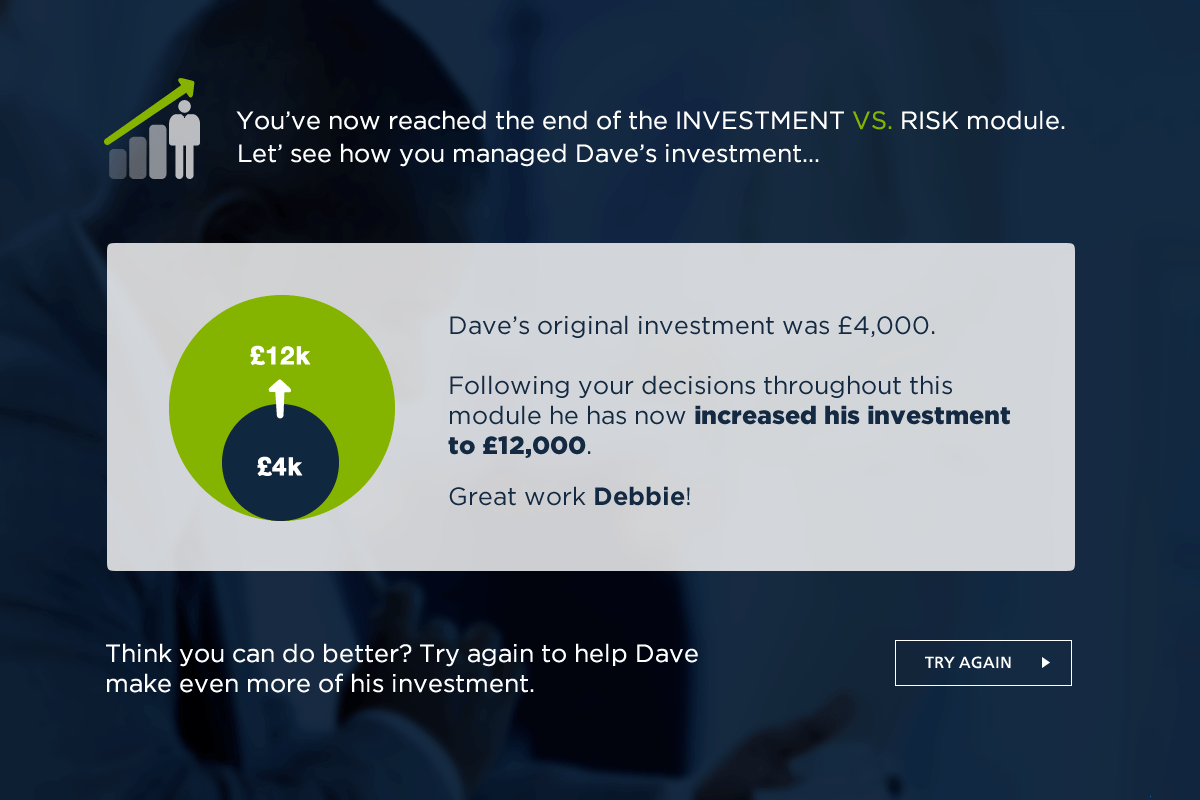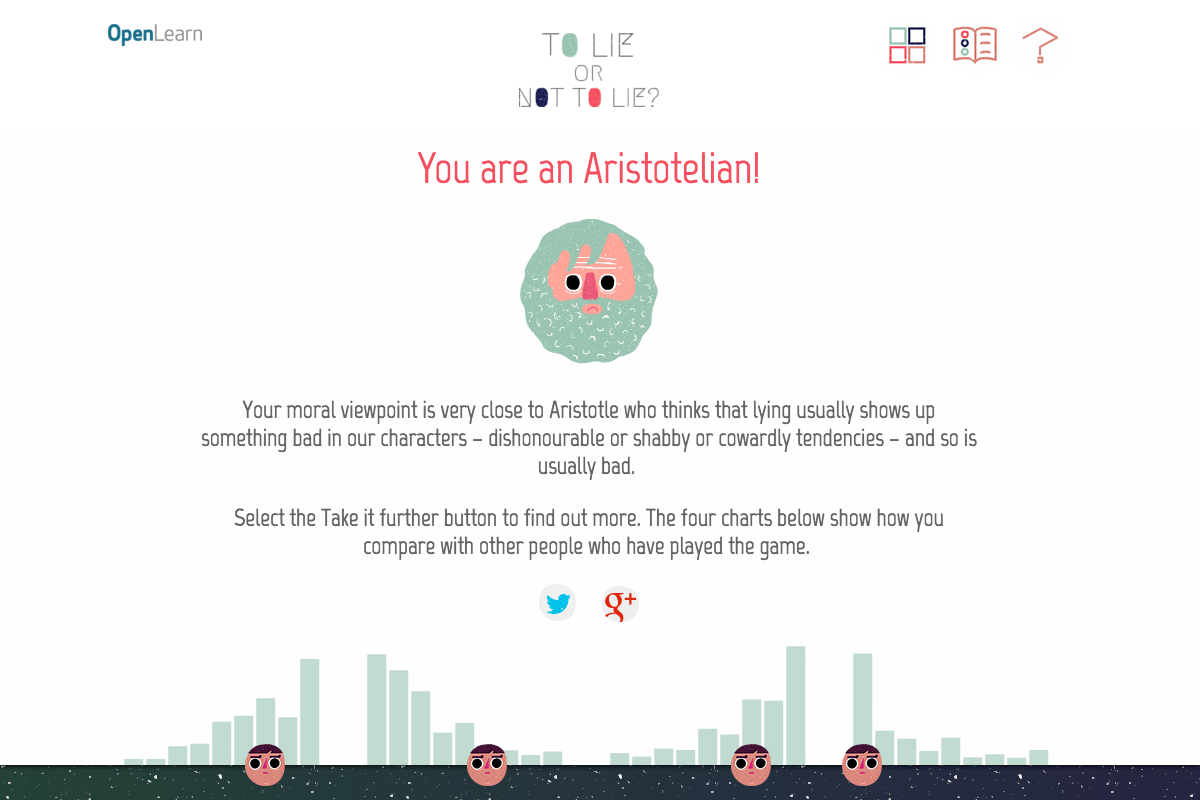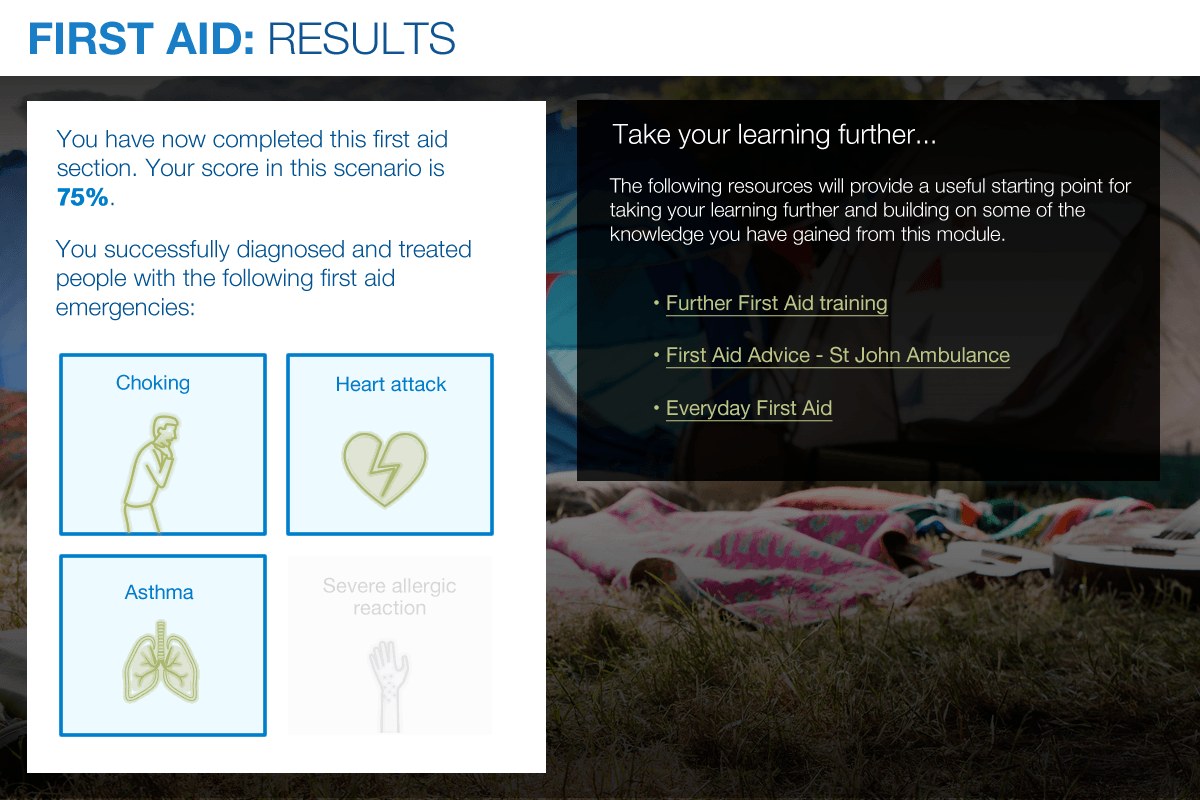How To Create Memorable eLearning Endings
A clear objective can guide the way you create your course. By starting with a defined end in mind, you can create an overview of the course prior to its start. Think of your eLearning course as being similar to a story. If you develop clear objectives, they will facilitate your ending.
Related: First impressions matter too. Learn how to create a beginning that engages and motivates learners
Let’s consider 3 ways you can build effective eLearning endings:
1. Offer a challenge.
Try using a challenge with real life implications to end an eLearning program. Give the learners a “real” problem to solve. Quiz for understanding by asking a multiple choice question related to the course learning objective.
Follow the question by using the final screen to review the original goal and report how well the learner has done.
Consider this final screen wrapping up a fact based challenge:

Call to actions are another effective way to end eLearning courses. Simply design an activity for learners to complete offline what they learned during the course. This method promotes learners' application of their new skills in their daily work or job tasks.
The following illustrates an effective call to action:

Key elements to include when using a challenge:
- If the system’s training is part of the eLearning course, ask the learners to apply their new skills to using the actual system.
- Include follow-up activities or list action items for learners to download, complete, and carry with them. Good examples of these are personal development plan template, or a SMART goals template.
- Compose a screen which summarizes key learning points, possibly using a scenario or case study. Ask learners to show parallels with their own context. For example, instruct them to rank the points based on their relevance to their own role. This will help them to reflect on key learning points and this will improve retention.
- Conclude with an assignment that reestablishes the key learning points and benefits learners with personalized feedback and possibly allows them analyze their results as they relate with others’.
2. Add personalization.
The future of eLearning lies in personalization. New technologies and platforms enable learning to be personalized to meet user needs and accessed anywhere and whenever desired.
By approaching the end of your course with an eye toward personalization, your course will do a better job of engaging individual learners.
I like the following example created by the team at Elucidat. It provides a link to a takeaway overview document which gives the learner a personally customized takeaway recognizing his or her achievement.

Key elements to include when personalizing a course ending:
- Design courses with individual learners in mind.
- Allow users to select their course materials, so they can learn the most personally relevant information.
- Give learners a customized takeaway document highlighting their results and learning objectives the learner needs to study.
Related: How to design personalized learning experiences
3. Link to supporting information and/or resources.
Use the end of a module as an opportunity share additional learning opportunities and to get the learner to apply what they have learned. Consider the final screen an opportunity to launch learners into something else.
This example –built with Elucidat– offers learners an opportunity to continue their learning:

Key elements to include when linking to other resources:
- Post a link to end of course information.
- Show learners additional resources like job aids, links to beneficial websites, or lists of important contacts.
- Provide learners with any follow-up information such as the availability of a certificate.
Good Stories Need Good Endings
Your eLearning course is just like a story. When you give it a good ending, you offer a resolution, provide a reward, and help your course exceed expectations.
- An effective resolution gives the learner a sense that they’ve completed a journey. Use your course objectives to summarize how the journey has met the objectives.
- A reward acknowledges the learner's accomplishments and gives feedback on their performance. For example, a certificate or badge, and accompanying feedback.
- A memorable experience with creative elements. The last screen needs to avoid clichés and do something unique.
Stay on top of the latest eLearning ideas, trends, and technologies by subscribing to the Elucidat weekly newsletter.

